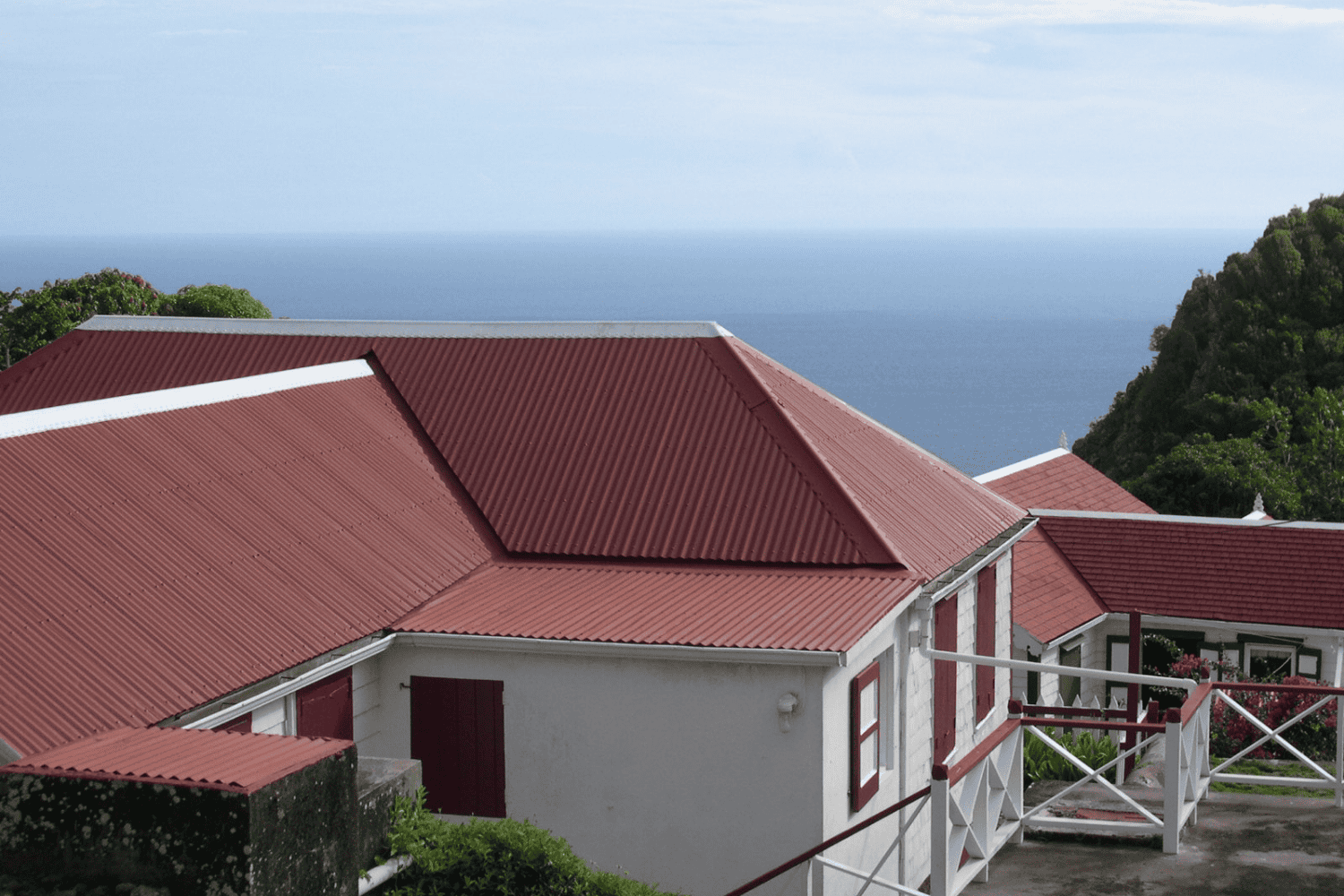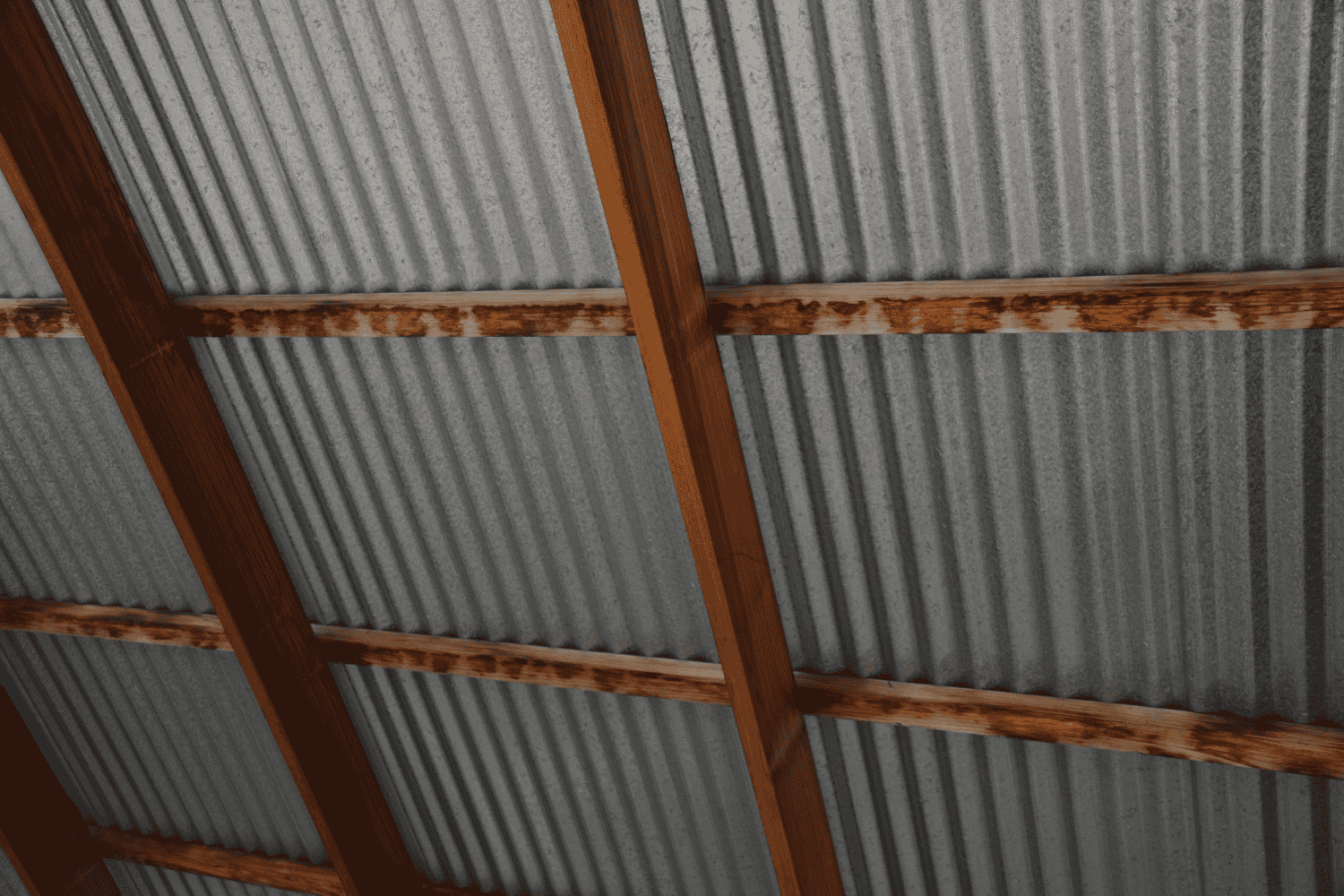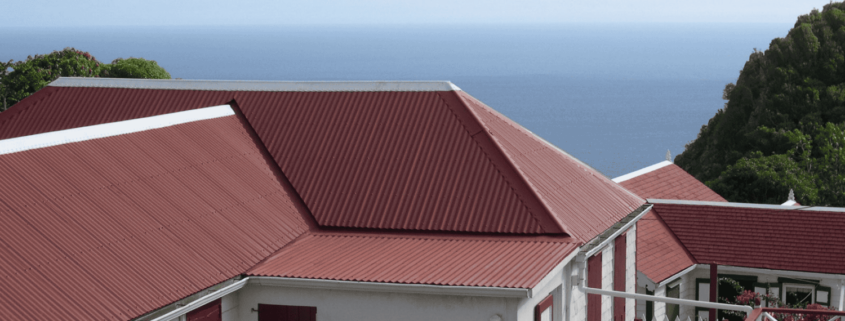How Much Does Tin Roofing Cost? A Comprehensive Guide for 2025
How much will a tin roof cost in 2025? This guide covers all you need to know about tin roofing cost, including materials, labor, and installation.
Key Takeaways
-
Tin roofing costs are influenced by material prices, labor expenses, and installation complexity, with prices varying significantly by location and roof design.
-
Material costs for tin roofing range from $10 to $18 per square foot, while labor typically accounts for about 60% of the total project cost, emphasizing the importance of hiring skilled professionals.
-
Homeowners can save on tin roofing projects by opting for affordable materials, timing their projects during off-peak seasons, and considering financing options to manage costs effectively.
Understanding Tin Roofing Costs

The cost of a metal roof project is influenced by several key factors, primarily material prices, labor charges, and additional expenses. Understanding these components helps in selecting the right materials and ensuring proper installation for a durable metal roof.
The overall cost of a metal roof can vary significantly depending on the location, with prices generally higher in metropolitan areas due to the cost of living.
Material prices are a significant part of the total expense when installing a new metal roof. The type and quality of metal roofing materials you choose will directly impact your budget. Additionally, labor expenses, influenced by the size and complexity of your roof, can constitute a substantial portion of the total cost.
Not to be overlooked, the complexity of the installation process can also affect the overall expenses, especially if your roof has intricate designs or steep slopes.
Material Cost Breakdown
Tin roofing materials typically cost between $10 to $18 per square foot. However, the overall cost of metal roofing materials can vary widely depending on the type, ranging from as low as $2 to as high as $43.42 per square foot.
The thickness or gauge of metal roofing panels significantly influences pricing, with heavier gauges costing 25% to 40% more than lighter ones. Ordering all materials and accessories at once can lower costs by minimizing handling and shipping charges.
Thickness isn’t the only factor that influences pricing. The type of metal also plays a crucial role. For instance, zinc metal roofing ranges from $10 to 20 per square foot, while standing seam metal roofing costs between $10 to 16 per square foot. Opting for stone-coated steel or corrugated steel also offers different price points, impacting your overall budget.
Additionally, understanding metal roofing prices can help you make a more informed decision.
Labor Expenses
Labor costs typically account for about 60% of the total roofing cost. For example, the average installation cost for a 3,000 square foot tin roof ranges from $30,000 to $54,000. The significant portion of the budget underlines the need for proper installation to prevent leaks, permanent damage, and rust. Hiring professional roofing contractors ensures a successful outcome for your project.
The complexity of the roof, contractor’s experience, and location are significant factors that influence labor costs. Improper installation can lead to severe problems, making it crucial to engage professionals who possess the necessary skills and expertise.
Remember, while DIY installation might seem cost-effective initially, the potential for costly mistakes is high.
Installation Complexity
Complex shapes and steeper slopes can significantly increase the costs associated with metal roofing. Simple gable roofs are generally the least expensive to install, while standing seam metal roofs, known for their durability and aesthetic appeal, are among the most costly.
More intricate designs necessitate additional labor time and custom fittings, further elevating installation expenses.
Securing the necessary permits before installation ensures compliance with local codes. This step, while sometimes overlooked, ensures that your roofing project complies with local building codes and regulations, preventing potential legal and financial setbacks down the road.
Comparing Tin Roofing to Other Metal Roofs

Comparing tin roofing to other metal options is important when considering a new metal roof. The cost of a metal roof typically ranges from $5.50 to $15.50 per square foot. Material type significantly influences roofing prices, with options like steel, aluminum, and copper each offering different benefits and price points.
Factors such as cost, durability, and aesthetics play crucial roles in selecting the right metal roof materials. These factors help in making an informed decision that balances your budget and your home’s needs.
Steel Roofing Costs
Steel roofing is one of the most popular options due to its affordability and durability. Steel roofing prices range between $6 and $21 per square foot. The cost can vary significantly within this range. The installation of steel shingle roofing for a standard-sized home can range in cost from $18,000 to $63,000. This variation in price depends on several factors.
Exposed fastened metal roofing material tends to be the most budget-friendly option among steel roofing types.
Aluminum Roofing Costs
Aluminum roofing panels are lightweight, corrosion-resistant, and energy-efficient. The average cost range for aluminum roofing panels is between $7 to $17 per square foot. These characteristics make aluminum a viable option for homeowners looking for a balance between cost and performance.
Copper Roofing Costs
Copper roofing is known for its longevity, with an expected lifespan of over a century. The cost of copper roofing typically falls between $20 to $40 per square foot, making it one of the more expensive options. For a standard 3,000 square foot copper roof, the estimated total cost ranges from $60,000 to $180,000.
Benefits of Tin Roofing

Tin roofing offers several notable benefits, making it an attractive option for homeowners. Durability is a key advantage, as metal roofs, including tin, are known for their long lifespan and resistance to severe weather conditions. Additionally, the energy efficiency of tin roofing can lead to significant savings on heating and cooling bills. Choosing lighter-colored tin roofing can help reflect heat, reducing cooling costs.
Low maintenance is another compelling benefit of tin roofing. Unlike other roofing materials, tin requires minimal upkeep, making it a cost-effective and convenient choice for homeowners.
Longevity and Durability
Metal roofs can last between 40 to 80 years, with a standing seam metal roof lasting two to three times longer than non-metal roofs. They are highly resistant to severe weather, including strong winds and heavy snow. This durability makes them a reliable choice for long-term home protection.
Energy Efficiency
Tin roofs are energy-efficient, helping to reduce overall energy bills. The reflective surfaces of metal roofs significantly reduce heat absorption, maintaining cooler temperatures inside the home.
Reflective metal roofing can lead to significant savings on cooling expenses. Homeowners can save up to 40% on their annual cooling costs by using this type of roofing.
Low Maintenance
Tin roofing is classified as low maintenance, requiring minimal upkeep compared to other roofing materials. Annual inspections and cleaning are usually sufficient to keep a tin roof in optimal condition.
Factors Affecting Tin Roofing Costs

Several factors can influence the overall cost of tin roofing. These include roof complexity, such as low pitch and intricate designs, which can increase installation costs. Steeper roofs require more materials and labor, adding to the total expense.
Additionally, the removal of an old roof can lead to extra costs during the installation of a new tin roof. Obtaining multiple estimates ensures fair pricing for your metal roofing project.
Roof Size
Roof size plays a significant role in determining the overall cost of a metal roof project. Larger roofing square projects generally have lower material costs per square foot compared to smaller ones. However, the total cost increases with the size of the roof due to the need for more materials and labor.
For smaller jobs, under 500 square feet, the cost can be significantly higher, potentially double to triple the price per square foot. Therefore, bulk purchases and larger projects tend to be more cost-effective in the long run.
Roof Pitch and Design
The pitch and design of your roof can significantly impact the cost of a new metal roof. Complex shapes and steeper roofs require additional labor and materials due to the need for more cutting and custom fittings. For example, features like snow guards or snow rails may be necessary for steep roofs, adding between $1,000 and $4,000 to the total cost.
These factors contribute to the overall expense, making it essential to consider the design and pitch when budgeting for a metal roofing project.
Removal of Old Roof
The removal of an old roof significantly increases the overall cost of installing a new tin roof. The cost of removing an old roof can range from $1,000 to $5,000, depending on factors such as the roof size and disposal fees.
Factoring in these additional costs during planning helps avoid unexpected financial burdens.
DIY vs. Professional Tin Roof Installation
Many homeowners consider DIY installation to save money, but mistakes can lead to higher expenses in the long run. The choice between DIY and professional installation affects both short-term costs and long-term performance.
While DIY might seem appealing due to potential savings on labor costs, the complexity of metal roofing and the risks involved can offset these savings.
DIY Installation Costs
Homeowners can save an average of around $7,000 on labor costs by opting for DIY metal roof installation, with savings ranging from $3,400 to $10,500. However, it’s crucial to consider the risks and challenges associated with DIY installations, such as safety concerns, complexity, and potential hidden costs like purchasing tools and materials at retail prices.
Inexperienced homeowners may end up needing to hire professionals after a DIY attempt, negating initial savings.
Professional Installation Benefits
Hiring professional roofing contractors ensures expert knowledge and adherence to best practices for metal roofing. Professionals possess specialized tools and skills not typically available to DIYers, ensuring a more effective installation. Additionally, professional installations often come with warranties covering both labor and materials, providing peace of mind for homeowners.
Professional installation often results in a faster and more aesthetically pleasing outcome, especially for complex designs.
Financing Your Tin Roof

Financing options can make the cost of a new roof tin roof more manageable. Homeowners can benefit from various financing plans that allow for manageable payment terms tailored to their budget. Many roofing companies offer financing options directly, simplifying the process for homeowners without available cash.
Some plans range from a year to a decade and may feature no interest, making it easier to spread out the roofing costs.
Loan Options
Home improvement loans and personal loans are two common financing options for tin roofing projects. Home improvement loans are specifically designed to assist homeowners in funding renovations, including tin roofing. Personal loans can also be utilized for this purpose, each with its own set of advantages and repayment terms.
These loans support the financial needs of installing a tin roof, offering flexibility and ease.
Payment Plans
Personal loans for roofing are typically offered by banks and can vary significantly in interest rates and repayment terms. Home equity loans usually have lower interest rates compared to personal loans and often provide predictable payment schedules.
Roofing companies and financial institutions offer various payment plans to help homeowners manage the costs of tin roofing projects. The right financing option can significantly ease the financial burden of a tin roofing project.
How to Save Money on Tin Roofing
There are several strategies to save money on tin roofing projects. Choosing affordable materials like aluminum, tin, and steel can help reduce costs. For roofs with damage, choosing repair over full roof replacement can be a cost-effective alternative.
Purchasing from a supplier’s existing inventory can lead to significant savings since suppliers are often eager to sell off surplus stock. Utilizing local suppliers can also decrease transportation costs, contributing to overall savings.
Seasonal Discounts
Timing your roofing project during off-peak seasons can increase the likelihood of accessing discounts and promotional offers. Late winter and early spring are often the cheapest times to replace a roof due to lower demand and potential contractor discounts. Roofing companies often offer reduced prices during these times to attract business.
Planning your project during these periods allows you to take advantage of seasonal discounts and save on costs.
Bulk Purchasing
Buying roofing materials in large quantities can lead to substantial savings on per-unit costs and better negotiation power with suppliers. Purchasing in bulk typically results in a lower cost per unit, making it a cost-effective strategy for larger roofing projects.
Consolidating purchases can reduce costs and enhance relationships with suppliers, potentially leading to better future deals.
Summary
In conclusion, understanding the comprehensive costs of tin roofing involves considering material prices, labor expenses, and installation complexities. Comparing tin roofing to other metal roofing options like steel, aluminum, and copper can help you make an informed decision based on cost, durability, and aesthetics. The benefits of tin roofing, including its longevity, energy efficiency, and low maintenance, make it a strong contender for a durable and cost-effective roofing solution.
Financing options and money-saving strategies can further ease the financial burden of installing a new tin roof. By timing your project during off-peak seasons, purchasing materials in bulk, and exploring various loan and payment plans, you can achieve significant savings. Ultimately, whether you choose DIY installation or hire professional roofing contractors, being well-informed and prepared will ensure a successful roofing project that meets your budget and home improvement needs.
Frequently Asked Questions
How much would it cost to put a tin roof on a 1000 square-foot house?
The cost of installing a tin roof on a 1000 square-foot house typically ranges from $10,000 to $18,000, depending on factors such as material quality, labor expenses, and roof complexity.
How long does a tin roof usually last?
A tin roof can last between 40 to 70 years, with proper maintenance and care. Its durability makes it a long-lasting roofing option compared to traditional materials like asphalt shingles.
How does tin roofing compare to other metal roofing options?
Tin roofing is known for its durability and energy efficiency. Compared to other metal options like steel, aluminum, and copper, tin offers a balance of cost-effectiveness and performance, making it a popular choice for homeowners seeking long-lasting roofing solutions.





